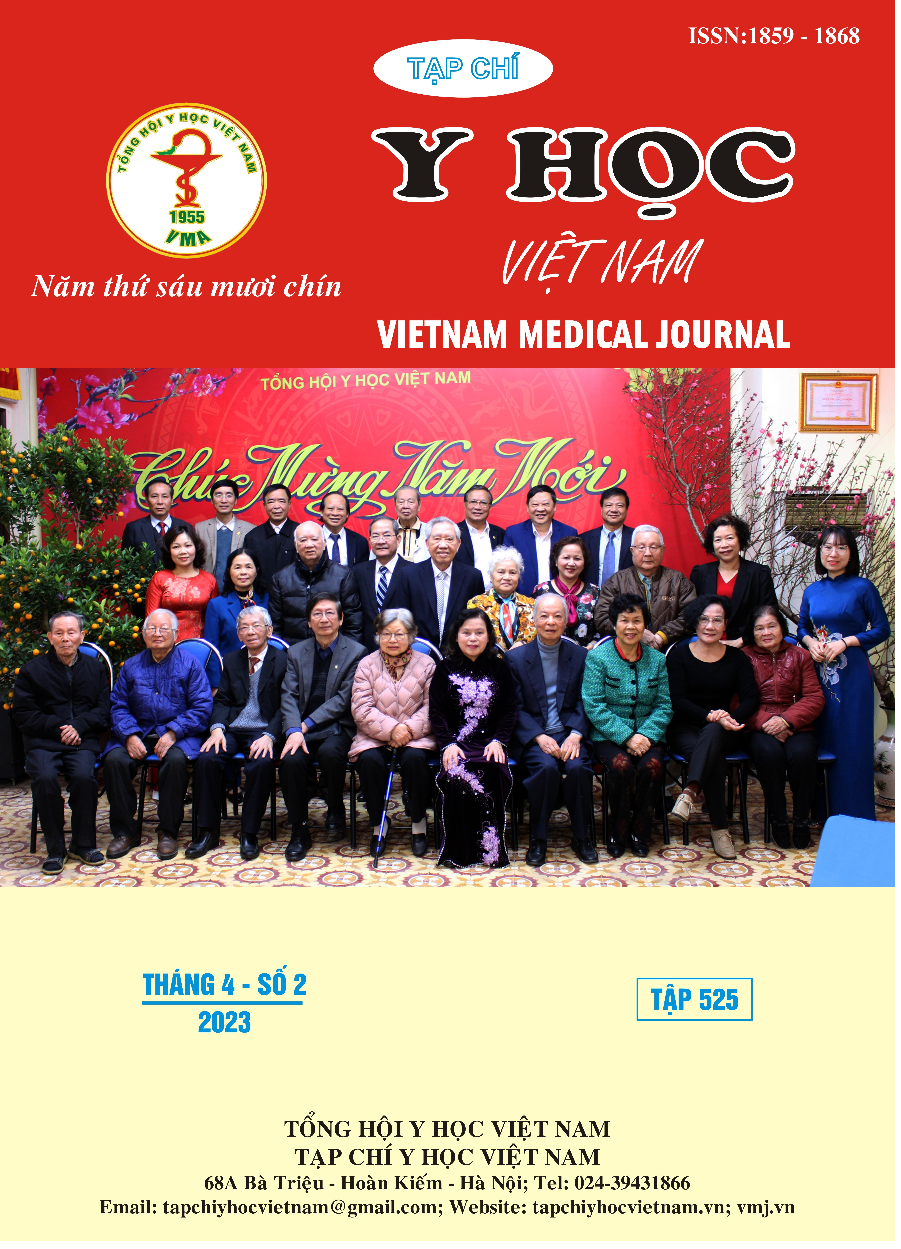THE ASSOCIATION BETWEEN METABOLIC SYNDROME, COMPONENTS OF THE METABOLIC SYNDROME WITH THE RISK OF FEMORAL NECK FRACTURE AND THE RISK OF MAJOR OSTEOPOROTIC FRACTURE ACCORDING TO THE FRAX MODEL IN THE ELDERLY
Main Article Content
Abstract
Objectives: To investigate the association between metabolic syndrome, components of the metabolic syndrome with the risk of femoral neck fracture and the risk of major osteoporotic fracture according to the FRAX model in the elderly at the Rheumatology Clinic and Geriatric Clinic, University Medical Center, Ho Chi Minh City. Methods: This cross-sectional study was conducted with the participation of 239 elderly patients (≥ 60 years of age) at Geriatric clinic and Rheumatology clinic of University Medical Center Ho Chi Minh City from November 2020 to May 2021. Metabolic syndrome was defined using criteria from NCEP/ATP III (National Cholesterol Education Program/Adult Treatment Panel III) in 2005 for Asian people. High risk of fracture was defined using fracture risk assessment tool (FRAX) with femoral neck bone mineral density, cut-points of ≥ 3% for 10-year hip fracture (FRAX1) and ≥ 20% for 10-year major osteoporotic fracture (FRAX 2). Results: Of 239 elderly enrolled the study, we had 95 patients with metabolic syndrome and 144 patients without metabolic syndrome. The group with metabolic syndrome had higher FRAX1 and FRAX2 compared with the group without metabolic syndrome. However, statistically significant differences were only recorded in the female group (p < 0.05). In the metabolic syndrome components, waist circumference and HDL-C were negatively correlated with FRAX1 and FRAX2 in women (p < 0.001), but not in men. There was a positive correlation between systolic blood pressure and FRAX1 in women but not in men. There was no correlation between diastolic blood pressure, triglycerides, fasting blood glucose with FRAX1 and FRAX2 in both sexes. In the multivariate linear regression analysis of the relationship between some risk factors with FRAX1 and FRAX2 outcomes in women, the metabolic syndrome increased FRAX1 and FRAX2 by 1.79% and 2.92%, respectively (p < 0.05). Waist circumference was negatively correlated with FRAX1 and FRAX2 with beta values of β = -0.07 (p = 0.044) and β = -0.11 (p = 0.032), respectively. Conclusion: Metabolic syndrome increases the 10-year FRAX risks of femoral neck fracture and of major osteoporotic fracture by 1.79% to 2.92%, respectively. There was a negative correlation between waist circumference and the risk of femoral neck fracture and the risk of major osteoporotic fracture within 10 years according to the FRAX model with beta values of -0.07 (p = 0.044) and -0.11 (p = 0.032), respectively in females.
Article Details
Keywords
Metabolic syndrome, osteoporosis, FRAX.
References
2. Hernández J L, Olmos J M, González-Macías J (2011), "Metabolic syndrome, fractures and gender". Maturitas, 68 (3), pp. 217-23.
3. Lee H J, Hwang S Y, Kim S C, et al. (2020), "Relationship Between Metabolic Syndrome and Bone Fracture Risk in Mid-Aged Korean Women Using FRAX Scoring System". Metab Syndr Relat Disord.
4. Oei L, Zillikens M C, Dehghan A, et al. (2013), "High bone mineral density and fracture risk in type 2 diabetes as skeletal complications of inadequate glucose control: the Rotterdam Study". Diabetes Care, 36 (6), pp. 1619-28.
5. Qin L, Yang Z, Zhang W, et al. (2016), "Metabolic syndrome and osteoporotic fracture: a population-based study in China". BMC Endocr Disord, 16 (1), pp. 27.
6. Schwartz A V, Vittinghoff E, Bauer D C, et al. (2011), "Association of BMD and FRAX Score With Risk of Fracture in Older Adults With Type 2 Diabetes". JAMA, 305 (21), pp. 2184-2192.
7. Szulc P, Varennes A, Delmas P D, et al. (2010), "Men with metabolic syndrome have lower bone mineral density but lower fracture risk--the MINOS study". J Bone Miner Res, 25 (6), pp. 1446-54.
8. Trimpou P, Odén A, Simonsson T, et al. (2011), "High serum total cholesterol is a long-term cause of osteoporotic fracture". Osteoporos Int, 22 (5), pp. 1615-20.
9. Wang Y, Dai J, Zhong W, et al. (2018), "Association between Serum Cholesterol Level and Osteoporotic Fractures". Front Endocrinol (Lausanne), 9, pp. 30.
10. Yamaguchi T, Kanazawa I, Yamamoto M, et al. (2009), "Associations between components of the metabolic syndrome versus bone mineral density and vertebral fractures in patients with type 2 diabetes". Bone, 45 (2), pp. 174-9.


